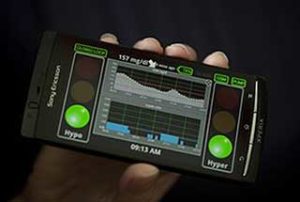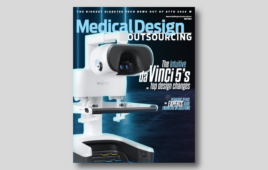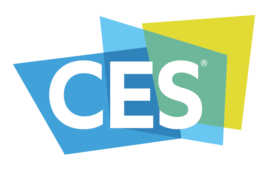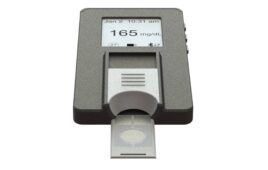
The University of Virginia is working to fully-automate an artificial pancreas to ease living with type 1 diabetes. [Photo courtesy University of Virginia]
An artificial pancreas is a system that mimics the function of a healthy pancreas and regulates glucose. The system that UVA researchers developed is a two-part system. A smartphone uses an algorithm to deliver insulin when needed and control blood sugar levels—all automatically. An implanted insulin pump collects glucose levels from the smartphone every 5 minutes.
The FDA approved the UVA-developed artificial pancreas for testing in 2012, and UVA received a $3.4M grant from the National Institutes of Health in 2013. The device is currently in the testing phase and will be sent to the FDA for approval upon completion in 2018, according to the university.
Most artificial pancreas systems work with a continuous glucose monitor (CGM), a control algorithm and an insulin pump, according to the FDA.
People with diabetes place a sensor under the skin to continuously check the glucose in the fluid surrounding the blood cells, giving the device the blood glucose levels. The CGM sends information about the patient’s blood glucose levels to a receiver that displays a glucose level estimate and what the expected change will be for the levels. The display on the UVA-developed system is a smartphone with a built-in app to monitor these levels and alert the patient of any dangerous glucose levels.
The algorithm receives the information from the CGM and calculates how much insulin needs to be administered by the insulin pump. The insulin pump administers insulin to tissue just under the skin.
The goal of the artificial pancreas is to reduce the amount of times diabetics have to stick their fingers to check blood sugar levels and inject insulin and totally automate the system.
The UVA-developed artificial pancreas is one of a number of artificial pancreas devices under development. Medtronic developed the MiniMed 670G system, which is a closed loop system that monitors glucose and delivers insulin based on the glucose readings. The MiniMed 670G continuously delivers user-selected basal insulin to manage type 1 diabetes, though users still need to manually handle mealtime insulin doses. It was approved by the FDA on Sept. 28, 2016.
Johnson and Johnson developed a Hypoglycemia-Hyperglycemia Minimizer system in 2012 that predicted the rise and fall of blood glucose and responded with a safe delivery of insulin.
People with type 1 diabetes have a pancreas that produces little to no insulin needed to regulate blood glucose. They have to check and inject insulin regularly to regulate their blood glucose to reduce the risk of blindness, kidney failure and cardiovascular disease. Insulin takes glucose from the blood and uses it for energy, lowering the blood glucose levels. Glucagon makes the liver release stored glucose and raises blood glucose levels.
According to the American Diabetes Association, 29.1 million Americans, or 9.3% of the population, lived with diabetes in 2012. That number is steadily growing with 1.4 million new cases a year. It is the 7th leading cause of death in the U.S.
The CGM market is expected to grow at an annual growth rate of 24.10% over the next six years and reach a market value of $2.13B by 2022, according to a Research and Markets report. Major driving factors for the market growth include advancements in technology, ease of use and the ability to connect to smart devices.
[Want to stay more on top of MDO content? Subscribe to our weekly e-newsletter.]





It is incorrect that diabetics “check and inject” glucagon “regularly.” At $100+ a pop glucagon is only used for emergencies (usually when unconscious). Diabetics use glucose tablets, juice, white rice (any simple carbs) to raise blood sugar.
That’s a really good point, Elena. Thanks for sharing. We fixed the article.